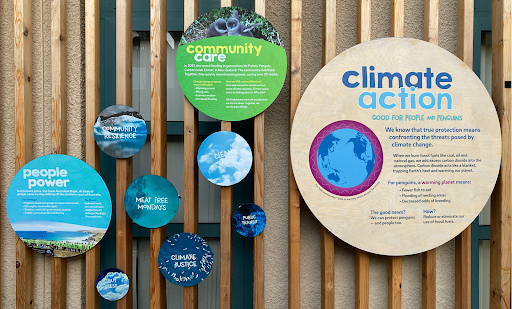Climate Note · Oct 1, 2024
How museums use YPCCC insights to develop climate exhibits
By Mallika Talwar, Stephanie Ratcliffe, Joshua Low and Jennifer Marlon

We are pleased to announce the publication of a new article (Page 26), “Museums use the Yale Program on Climate Change Communication’s (YPCCC) Insights to Guide Their Climate Exhibits and Programs” in Issue No. 181 of the journal Informal Learning Review.
Museums in the U.S., given their high level of public trust across political divides, are well-positioned to engage diverse audiences in climate action. A growing number of museums are designing exhibitions and educational programs that explain climate change causes, consequences, and solutions, but are faced with challenges common to all climate communicators: What does our audience already understand or not understand about climate change? How do we meet them where they are? How do we inspire action, and can we have fun along the way?
YPCCC’s research and tools can help museums of all types, including natural history, art, science, and history museums, develop effective communication strategies responsive to their audience’s unique needs. This case study has lessons for all climate communicators and science educators.
Key Takeaways:
- Museums are highly trusted institutions. Many Americans want museums of all types, including natural history museums, zoos, aquaria, public gardens, art, and history to engage their communities in climate change.
- A growing number of museums are developing targeted and effective climate communication exhibits by using the Six Americas Super Short SurveY (SASSY) to better understand their visitors.
- Museums are also applying insights from social science research to break the climate spiral of silence, build social norms around taking climate action, and empower their visitors to participate in climate solutions.
The Six Americas framework — which categorizes people into six distinct audiences based on their opinions about climate change, ranging from the Alarmed (who are the most worried and supportive of action) to the Dismissive (who do not believe climate change is happening or human caused and are often opposed to action) — can be used by organizations to better understand their target audiences. In 2020, The Wild Center, a natural history museum in rural New York, used the YPCCC’s Six Americas Super Short Survey (SASSY) group scoring tool to better understand their visitors’ views on climate change. Given their rural location, museum staff were grappling with the challenge of communicating climate in an area where they believed there were conflicting opinions and priorities. Contrary to staff assumptions, however, the survey (which was conducted by the Kera Collective) found that most visitors were either Alarmed (51%) or Concerned (31%) about climate change, with only a small minority either Doubtful (3%) or Dismissive (2%). In fact, staff at the Wild Center had greatly underestimated support for climate action, a common example of pluralistic ignorance, where people misperceive the views of others. As a result, the Wild Center reoriented its exhibit to focus on climate solutions and encourage visitor participation in climate action. In July 2022, The Wild Center opened its Climate Solutions exhibit, featuring a Solutions Tinkering Studio and stories of local climate heroes designed to inspire visitors. Exit interviews revealed that visitors found the exhibit’s messages clear and effective, helped them identify climate solutions, and fostered a sense of hope in addressing the climate crisis.

A growing number of museums are also recognizing the role that social science research can play in helping them develop effective climate communication strategies. For instance, YPCCC research shows that Americans often underestimate how many others believe global warming is real and support climate policies, contributing to a “spiral of silence” where climate change is rarely discussed. The Climate Museum is tackling this through its “Busting the Myth” wall that explains that a majority of Americans support climate action.
Social science research has also established that emotions are a key factor in the effectiveness of climate messages. The Birch Aquarium at Scripps Institution of Oceanography at the University of California San Diego, applied this insight in their Little Blue Penguins exhibit which is designed to take the visitors on an emotional journey – encouraging them to fall in love with the penguins while learning how climate change affects their lives. Ultimately, this journey ends at a “Climate Action Wall” encouraging visitors to participate in climate solutions.

Effective evidence-based communication strategies like these are increasingly important as museums play a significant role in educating the public and driving climate action.
You can find more details about the report here and how museums use YPCCC’s research in this webinar.